Explanations, examples, little facts and little descriptions.
All sheep are not equal
There are many different kinds of sheep, literally hundreds, some are listed below, and within these families are sub families.
- Merino Sheep
- Leicester Long-Wool Sheep
- Lincoln Sheep
- Dorset Sheep
- Scottish Black Face Sheep
Our fabrics are made mainly from Australian and New Zealand Merino Sheep.
Merino Sheep
The Merino breed of sheep originated in Spain and the wool is noted for its fineness and whiteness. It was confined to Spain until the late 1700’s when Merino Sheep were exported to, and bred in, many other countries notably Australia and New Zealand that is where most of our sheep come from.
Our Usage
Our group buys over 1,500,000 lbs. of wool annually, ranging from the finest in the world at around 11.2 through to the ultra-fines and 20.5 micron.
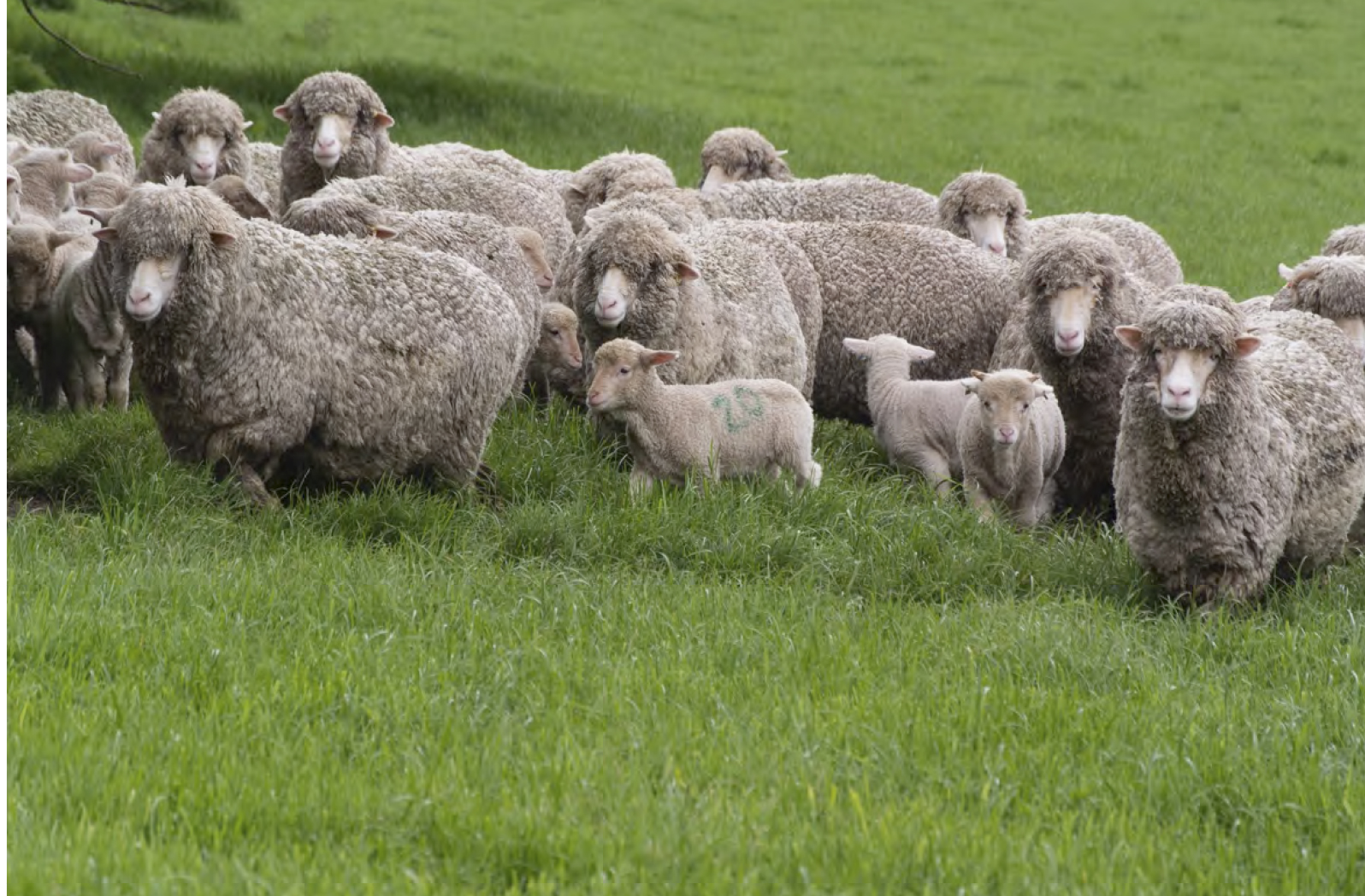
Shearing
Whilst the Merino provides a beautiful fleece it needs to be gently sheared to remove the fleece from the animal. An average fleece weight is about 8 lbs. greasy.
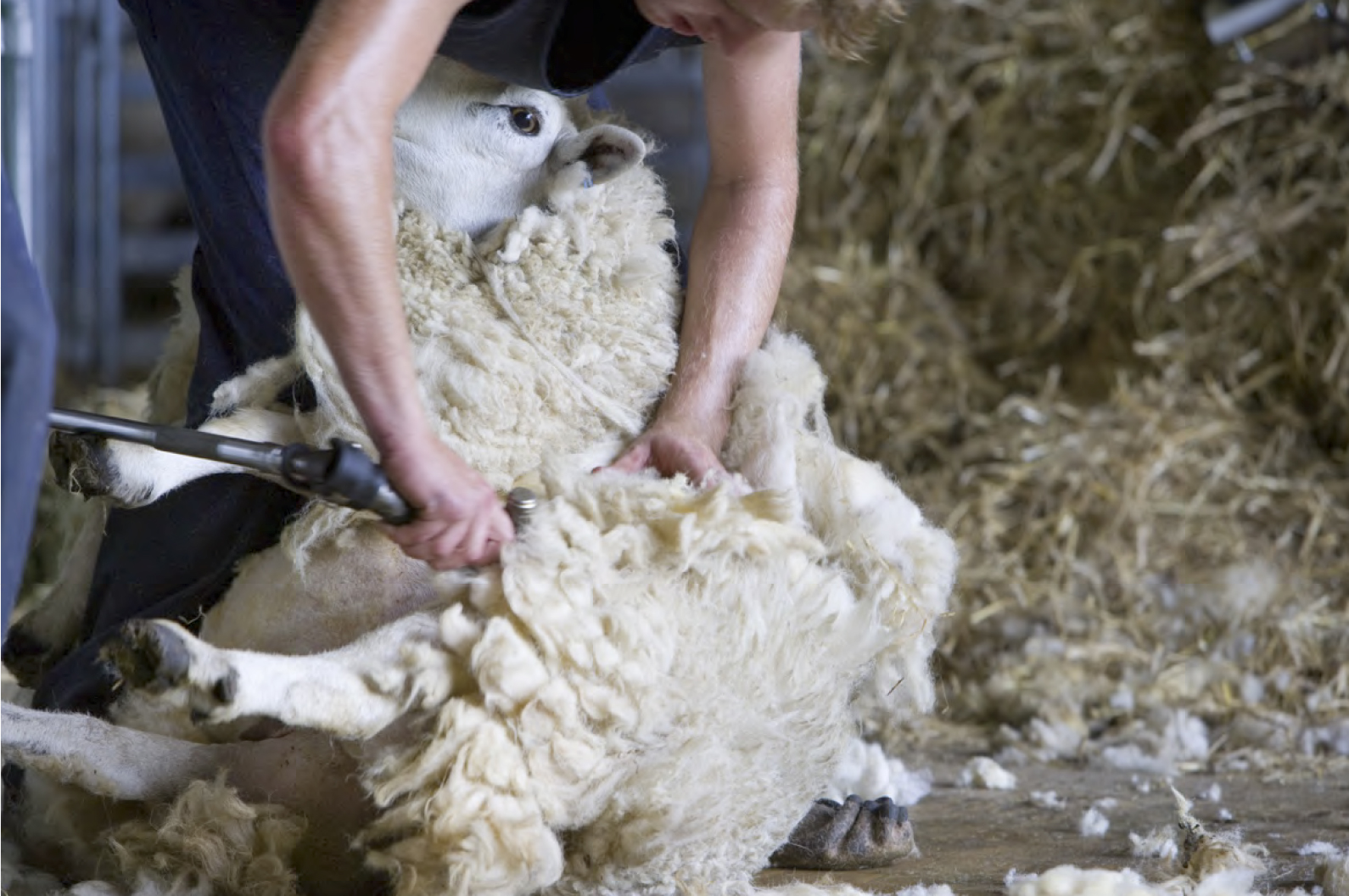
From Greasy To Top
The purchased wool is sent to be scoured (washed and cleaned) and then made into tops (wool carded then combed into 25 lb. rolls)
Wool Characteristics
The basic criteria that are taken into consideration when purchasing wool are as follows:
- Micron (thickness of the fiber)
- Strength of the fiber
- Length of the fiber
- Crimp of the fiber
Variation of the length of fibers within the fleece
Developing A Cloth To Determine Wool Characteristics
All cloths have four core foundations which they are built on.
- Micron (or Super designation, Super 140’s)
- Weave (the way in which the threads interlace, gabardine)
- Yarn Structure (thickness or count, single or two fold)
- Sett (the number of threads per inch in warp and weft)
The weave, yarn structure and sett will determine the weight.
Micron And Super Conversions
As mentioned previously, micron is one of the characteristics, and we buy from 11.2 through to 20.5 for our clothing needs. By comparison, a ladies hair when fine will be about 38 micron approximately 2 to 3 times thicker than our finest wool.
Micron To Super Conversions
- 11.8 = Super 240’s
- 12.8 = Super 220’s
- 13.8 = Super 200’s
- 14.8 = Super 180’s
- 15.8 = Super 160’s
- 16.8 = Super 140’s
- 17.8 = Super 120’s
- 18.8 = Super 100’s
We buy .3 of a micron finer to be well within spec.
Micron To Yarn Counts
Theoretically, the finer the wool micron the finer the yarn can be spun, and subsequently the lighter the cloth, if weave and structure are equal. However a basis of a good to great cloth is both its feel and look, combined with the ability of cloth to be beautifully sewn, finer is not necessarily better. So spinning the yarn to ensure the cloth has the ability to be perfectly tailored is paramount.
Yarn counts explained
Technical!!
The yarn count we use the most in our Royal Classic range is a worsted spun yarn ranging from 16.5 micron or Super 140’s. The yarn count itself is designated as 2/95 nm, where the NM stands for metric system. It is a two fold yarn, two strands twisted together. 2/95nm Each strand is 95nm, the 95 number is the mathematical relationship of the length to weight, for the engineering buffs it is as follow 95’s = 95 lengths of 1000 mts = 95000 mts = 1kg (2.204 lbs.)
Yarn Spinning Types
Worsted yarn
A typical worsted yarn is made from long lustrous wool from which the short fibers are removed by combing. All the processes tend to straighten the fibers which do not vary in length that much and are laid as straight and parallel as possible before spinning and imparting twist. The thread is smooth and lustrous, open in structure and even in thickness. End use: Suits, trousers, light jackets.
Yarn Spinning Types
Woollen Spun
A typical woollen yarn consists of short, fine wool, and contains all the varying lengths of the fibers, which are indiscriminately mixed together so that they lie across each other in all directions. A fibrous, dull, compact, but rather uneven thread is produced, which has excellent felting properties, and when dyed takes on a soft deep, and rich color. End use: Overcoats, heavier coats, flannels and heavy trousers
Worsted Cloth
A cloth produced with worsted yarns, typically suiting’s trousers and dress jackets. The cloth is light in weight and has a luster.

Woollen Cloth
A cloth produced with woollen yarns, typically coatings, country jackets, tweed jackets. The cloth is heavier in weight and has a lofty volume. 18 Typical Royal Classic Cloth 824707 Blue Sharkskin Weave is 2/2 twill A typical Royal Classic cloth has the following in one suit length, 6404 ends (vertical threads) x 4 yards long. 92 picks per inch in the horizontal x 4 yards The vertical is warp, horizontal is weft. Total warp is 6404 x 4 = 25,616 yards of thread. Total weft is 4yard x 36 inches x 95 x 67 inch wide in loom = 25,460yards of thread Total thread for 1 suit = 51,076 yards Total fibers = 817,216 individual fiber’s give or take a few.
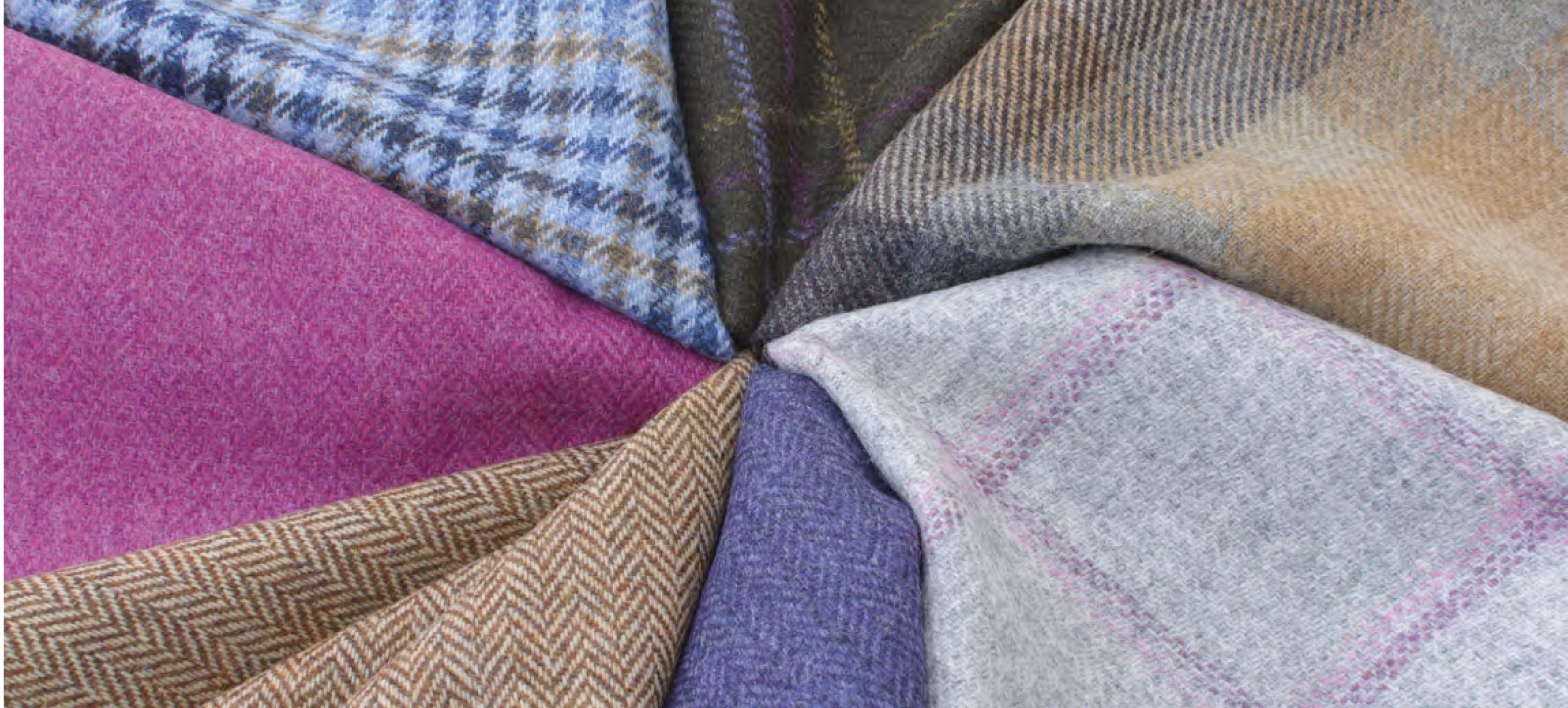
Cloth Weaves
The black square represents the vertical end passing over the horizontal end; the white square represents the vertical end passing under the vertical end.
Cloth Weaves
The black square represents the vertical end passing over the horizontal end; the white square represents the vertical end passing under the vertical end.
Plain Weave
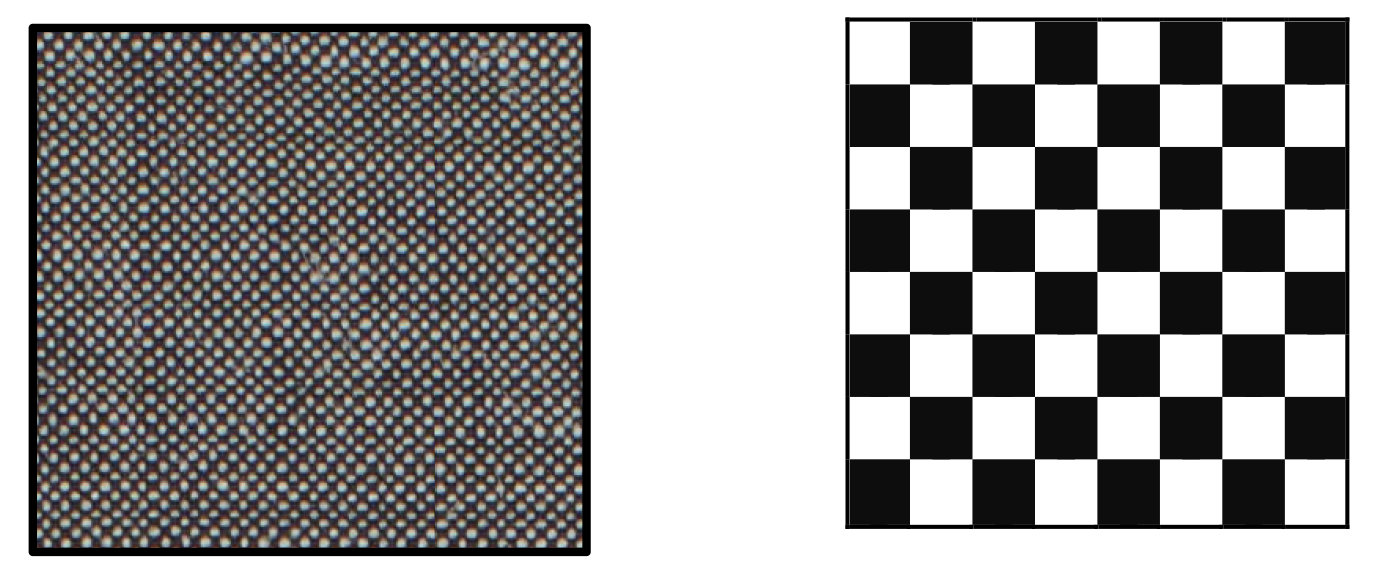
2/1 twill
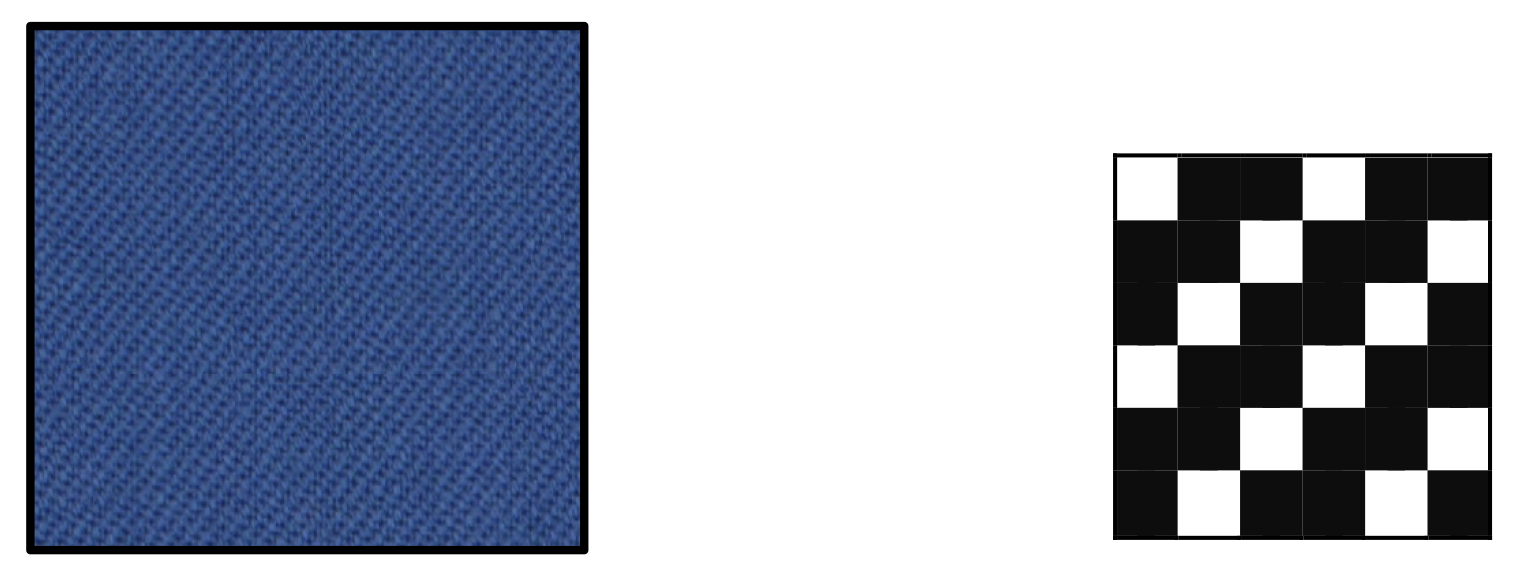
2/2 twill

Faille
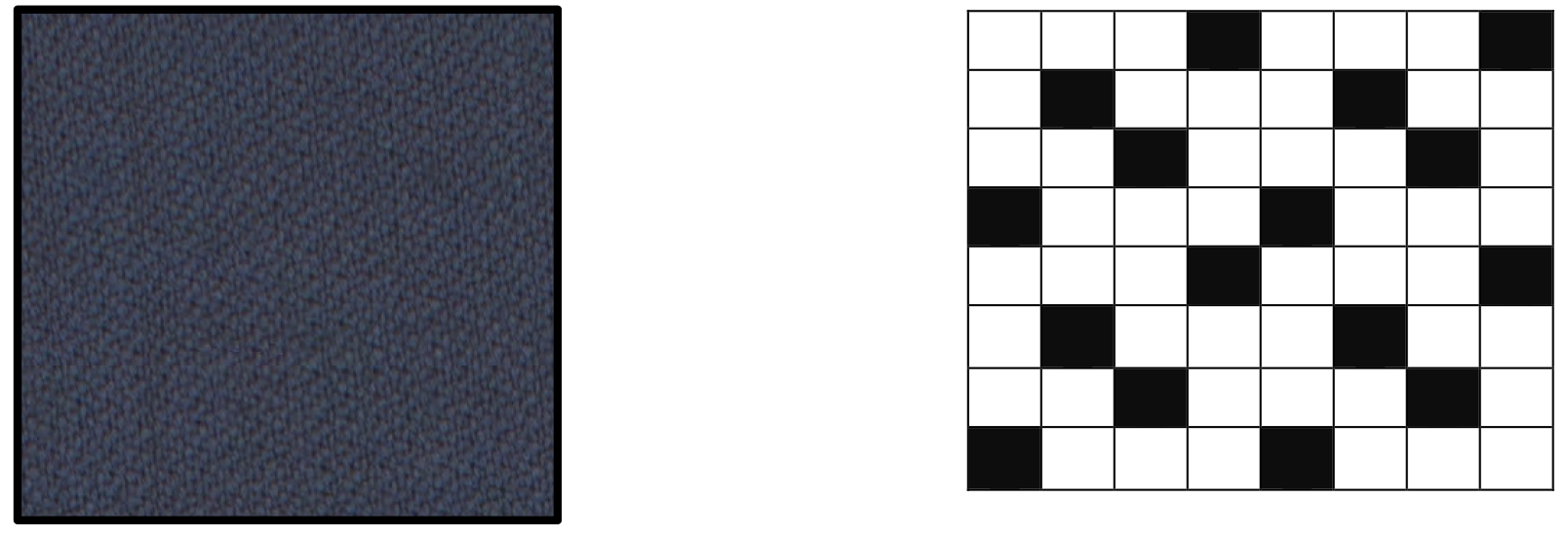
Hopsack

Venetian
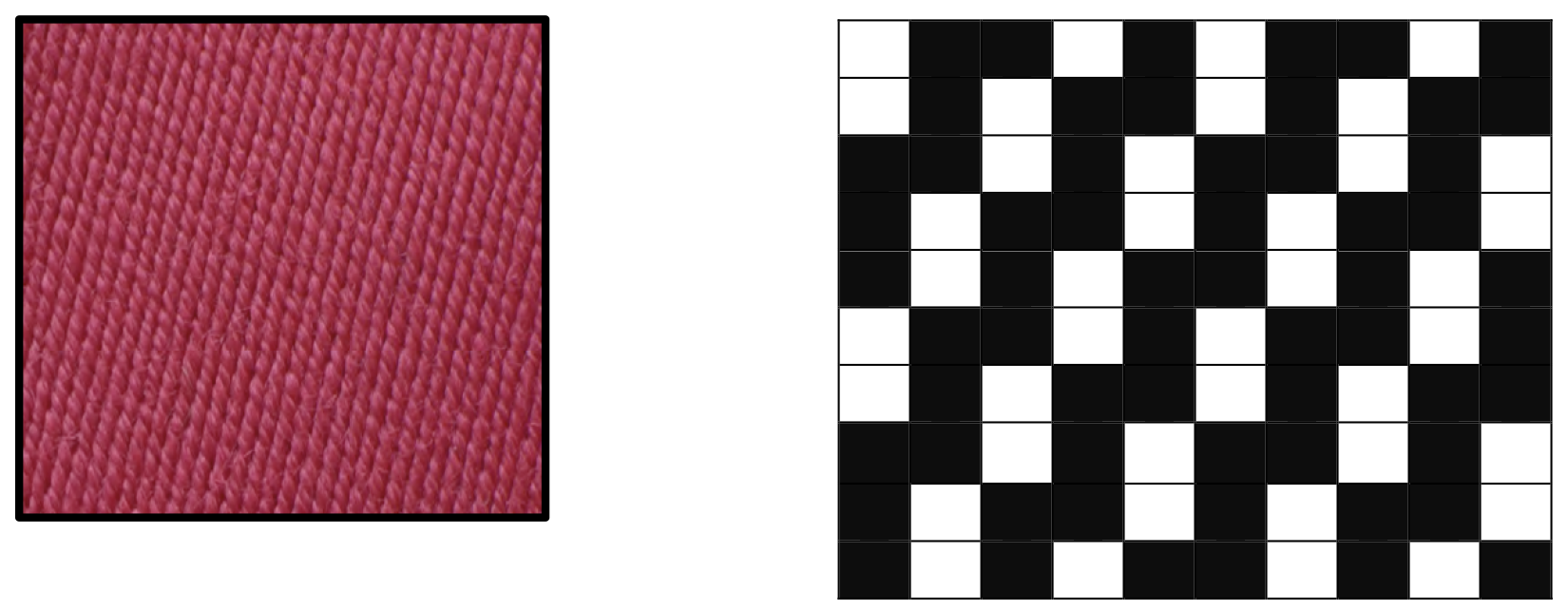
Sateen
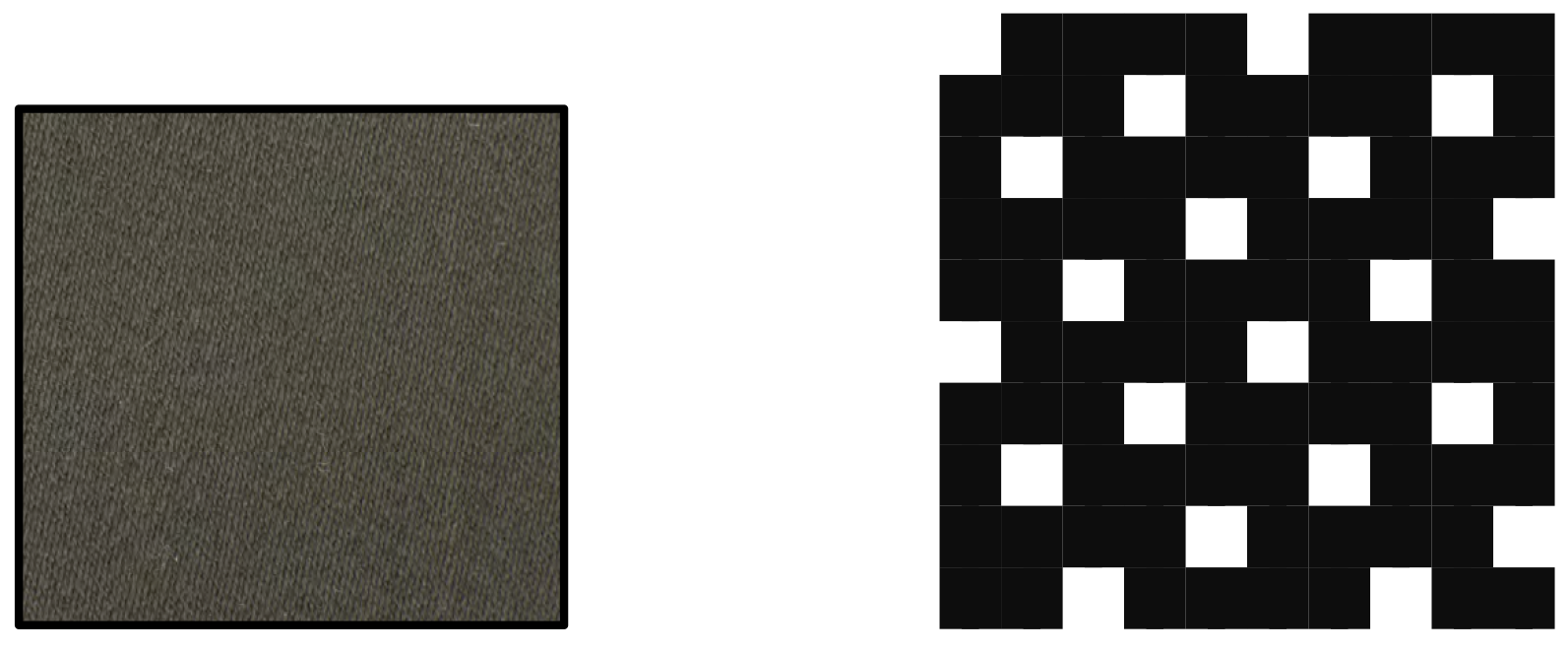
Cloth Usages By Range In Perennials
On the following sheets are a simple template that shows our perennial fabrics, in range groups including wool quality, descriptions, suitable end uses and client relationships.
Client relationships relate to frequency of wear, suitability for sizes, notable benefits of the cloth.
There are exceptions to all of these with every individual and it is only a guide.
| Number | Description | Wool Grade | Weave Type | Suitability | Size Limitations | Climate Type--Check all that apply | max wears per week | |||||
| CP | SC | PT | 52 nad up | summer north | summer south | winter north | winter south | with rest day | ||||
| 180050 | seersucker | 100% Cotton | 2 | |||||||||
| 180051 | seersucker | 100% Cotton | 2 | |||||||||
| 180052 | seersucker | 100% Cotton | 2 | |||||||||
| 180053 | seersucker | 100% Cotton | 2 | |||||||||
| 180320 | Royal Navy Gab | 100's | Gab | 3 | ||||||||
| 180321 | Navy Gab | 100's | Gab | 3 | ||||||||
| 180322 | Dk. Navy Gab | 100's | Gab | 3 | ||||||||
| 180323 | Blue Gray Gab | 100's | Gab | 3 | ||||||||
| 180324 | Char Blue Gab | 100's | Gab | 3 | ||||||||
| 180325 | Lt. Gray Gab | 100's | Gab | 3 | ||||||||
| 180326 | Mid Gray Gab | 100's | Gab | 3 | ||||||||
| 180327 | Dk.Gray Gab | 100's | Gab | 3 | ||||||||
| 180328 | Charcoal Gab | 100's | Gab | 3 | ||||||||
| 180329 | Black Gab | 100's | Gab | 3 | ||||||||
| 180330 | Tan Mix Gab | 100's | Gab | Care Needed | 3 | |||||||
| 180331 | Tan Gab | 100's | Gab | Care Needed | 3 | |||||||
| 180332 | Heather Tan Gab | 100's | Gab | Care Needed | 3 | |||||||
| 180333 | Heather Brown Gab | 100's | Gab | 3 | ||||||||
| 180334 | Brown Gab | 100's | Gab | 3 | ||||||||
| 180335 | Navy Oxford Weave | 100's | Hopsack | 3 | ||||||||
| 180336 | Dk. Navy Oxford Weave | 100's | Hopsack | 3 | ||||||||
| 180337 | Blue Oxford Weave | 100's | Hopsack | 3 | ||||||||
| 180338 | Charcoal Oxford Weave | 1000's | Hopsack | 3 | ||||||||
| 180339 | Back Oxford Weave | 100's | Hopsack | 3 | ||||||||
| 180340 | Tan Mix Oxford Weave | 100's | Hopsack | 3 | ||||||||
| 180341 | Olive Brown Oxford Weave | 100's | Hopsack | 3 | ||||||||
| 180342 | Brown Mix Oxford | 100's | Hopsack | 3 | ||||||||
| 180343 | Dk. Olive Oxford Weave | 100's | Hopsack | 3 | ||||||||
| 180344 | New For S-15 | 100's | 3 | |||||||||
| 180345 | New For S-15 | 100's | 2 | |||||||||
| 180346 | New For S-15 | 100's | 2 | |||||||||